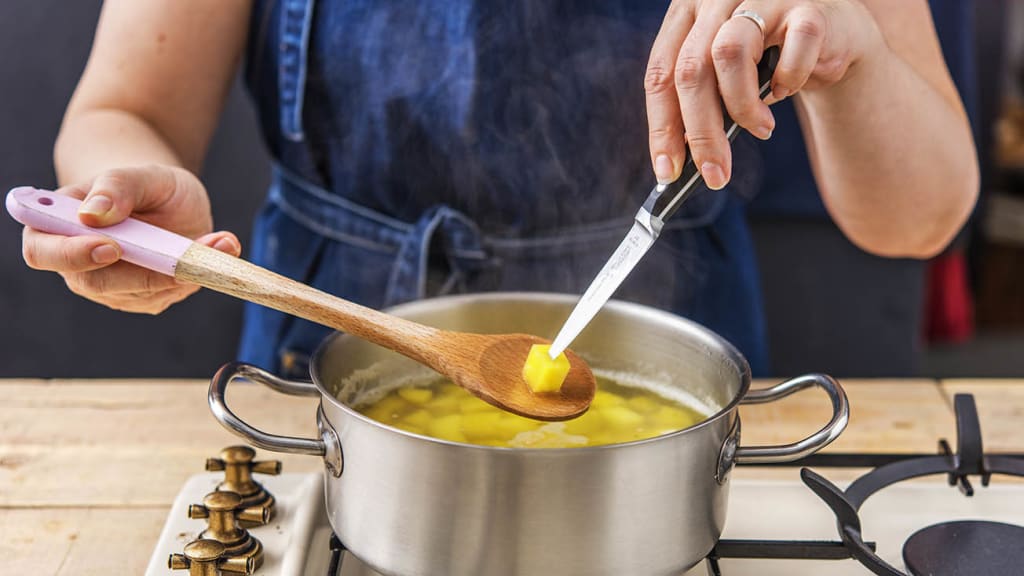Swede
Swede
Swede
This purple-green root vegetable is a cross between a turnip and a cabbage, and is a delicious, colourful and nutritious replacement for potatoes because you can mash, bake or roast it.
SWEDE NUTRITIONAL INFORMATION & HEALTH BENEFITS
This root vegetable packs a hefty punch when it comes to nutrition, and contains plenty of your daily intake of vitamins and minerals. 100g portion of roasted or boiled swede contains 18.8mg of vitamin C, for example. The root is also a great source of potassium, offering an impressive 216mg per 100g, as well as considerable calcium and fibre. The vegetable is also low in fat and calories.

HOW TO STORE SWEDE
Storing a swede is very similar to storing other root vegetables, such as carrots and potatoes. After harvesting or buying the vegetable, you can keep it in a perforated paper bag in the vegetable drawer of your fridge where it should last for a week.
If you want to keep the vegetable for a little longer, it is possible to freeze portions to use at a later date. The best way to prepare a swede for freezing is to cook it first – par-boil the vegetable for two minutes and then drain it and leave it to dry. When there is no more moisture, place the swede in a plastic container and store in the freezer. Alternatively, you can make a mash out of the swede after cooking it until it’s quite soft, then mashing it, spooning it into a container and popping it into the freezer. Both of these methods will keep the swede for around three months.

SWEDE TIPS, TRICKS & HACKS
Swede is a versatile ingredient in the kitchen and is used in very similar ways to other root veggies in most recipes. This slightly sweet and earthy vegetable is a healthier and more interesting alternative to the classic potato. Some of the best ways to use are:
- Mushroom and chestnut cottage pie with swede mash topping
- Sausage, swede mash and gravy
- Root vegetables with mustard mash
- Root vegetable gnocchi with sage
If you want to know how to cook swede, the first step is almost always to boil it first. Peel and chop it into small chunks before dropping them into boiling water for 15-20 minutes, until tender. When it’s ready, you can mash it with some butter and herbs or roast it with oil on a baking tray for a wonderful side dish.

This hearty and delicious root vegetable is used in casseroles, soups and slow cookers around the world, especially during the colder months. Cooking this vegetable slowly brings out its creaminess and sweet flavour, and adds depth and texture to plenty of comforting winter dishes. In Cornwall, England, the vegetable is an integral ingredient in Cornish pasties – a shortcrust pastry snack that is filled with vegetables and celebrates the mighty swede.
When selecting the perfect swede for your recipes, be sure to pick it up and have a feel for its size and skin condition. Larger vegetables often have more flavour than smaller ones, and are better served mash than whole. The best swedes feel heavy for their size and have clear, vibrant colours on blemish-free skin.
SWEDE FACTS
- This vegetable goes by many names in different parts of the world, including: neep, rutabaga and snagger.
- The origins of this vegetable are unclear, but it’s believed that it was first cultivated in 17th-century Bohemia as a hardy cross between a turnip and a cabbage.
http://www.farminmypocket.co.uk/food/store-carrots-et
http://blog.mr-fothergills.co.uk/fascinating-facts-figures-swede-turnip/
https://ao.com/life/kitchen/kitchen-tips/vegetable-cookbook/swede/
Delicious recipes for you to choose next week
Like what you see? Check out all of our upcoming recipes
VIEW OUR MENU